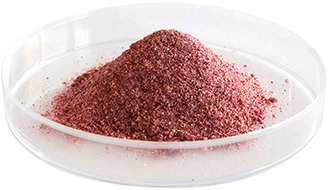
The word allergy comes from the Greek for “altered reaction”. They are immunoglobulin E (IgE)-mediated diseases, where the IgE antibody binds to the allergen and then to another immune cell such as basophils or mast cells, which triggers the release of inflammatory molecule histamine. These diseases include food allergy, allergic asthma, allergic rhinitis and atopic dermatitis1 with respiratory allergic diseases such as asthma being the amongst the most common diseases worldwide2. They tend to start early in life and persist throughout the lifetime of the individual. While they often start with weak sensitization to a limited number of allergens followed by stronger sensitization to a variety of allergen sources3-5, they may be fully developed in infancy and remain unchanged6.
The most common respiratory allergens, ones which we inhale along with air and which cause the immune system to respond in our lungs, are either specific things to which we are primed to respond (usually proteins or glycated proteins – that is, proteins which have specific carbohydrate structures attached to them, such as plant lectins), or more general reactions to environmental irritants such as pollution.
The main sources of respiratory allergens are particulates and pollen, pet allergens, dust mites and house dust. In humid areas, fungi and mould spores can also be prevalent enough to cause issues.
Particulates.
These particles are made up of ammoniated sulfate, crustal material, black carbon, ammonium nitrate, sea salt, trace element oxides, trapped water, and residual matter. The residual matter comes from the combustion of organic material, be it fossil fuels or wood. They are irritants and may cause inflammation as the lung immune systems attempt to contain or destroy them. Some particulates maybe pollen.
Pollen.
Allergies triggered by pollen is commonly known as hay fever. The pollen causing this varies by region and season but is invariably the minuscule airborne pollen of wind-pollinated plants such as pine, cedar, hazel, poplar, willow, alder, and (especially) birch, olive and ryegrass. The pollen of insect-pollinated plants seldom poses risk because they are too massive to remain airborne. Due to similarities between the protein on these pollens and the protein on some foods, cross allergies with food may result. For example, birch pollen allergies may cross-react to cause mild allergies to potato or apple skin proteins.
Dust mites.
Dust mites are microscopic arachnids that live on textiles within warm humid environments, such as people’s houses. While they are not harmful to humans, as they commonly feed on moulds or dead, shed skin particles, their faeces may be stirred up by wind or the passage of air caused by large movements, and in the time taken to settle they may be inhaled. They are highly allergenic because they contain digestive enzymes such as the protein Peptidase 1.
Spores.
Fungi and mould proliferate in damp, dark environments. Many species replicate by sporulation, ejecting single cells to disperse their progeny. They are light enough to remain airborne for significant lengths of time and can reach high concentrations in the air close to their source.
House dust.
This is a bit of a catch-all category, as the dust from human environments comes from various sources, including environmental particulates, pollen, dust mites, shed human and other animal hairs and skin, spores, paper and textile fibres.
References
- Calderon MA, Demoly P, Casale T, Akdis CA, Bachert M, Bewick M et al., (2016) Allergic immunotherapy across the life cycle to promote active and healthy ageing: from research to policies. Clinical and Translational Allergy. 6, Article number 41.
- Bousquet J, Khaltaev N.(2007) Global surveillance, prevention and control of chronic respiratory diseases. A comprehensive approach. In: Global alliance against chronic respiratory diseases. Geneva: World Health Organization; 2007.
- Pinart M, Benet M, Annesi-Maesano I, von Berg A, Berdel D, Carlsen KC, et al. (2014) Comorbidity of eczema, rhinitis, and asthma in IgE-sensitised and non-IgE-sensitised children in MeDALL: a population-based cohort study. Lancet Respir Med. 2(2):131–40.
- Westman M, Lupinek C, Bousquet J, Andersson N, Pahr S, Baar A, et al. (2015) Early childhood IgE reactivity to pathogenesis-related class 10 proteins predicts allergic rhinitis in adolescence. J Allergy Clin Immunol. 135(5):1199 e1–11–1206 e1–11.
- Asarnoj A, Hamsten C, Waden K, Lupinek C, Andersson N, Kull I, et al. (2016) Sensitization to cat and dog allergen molecules in childhood and prediction of symptoms of cat and dog allergy in adolescence: a BAMSE/MeDALL study. J Allergy Clin Immunol.137(3):813–21.
- Ballardini N, Bergstrom A, Wahlgren CF, van Hage M, Hallner E, Kull I, et al. (2016) IgE antibodies in relation to prevalence and multimorbidity of eczema, asthma, and rhinitis from birth to adolescence. Allergy. 71(3):342–9.




